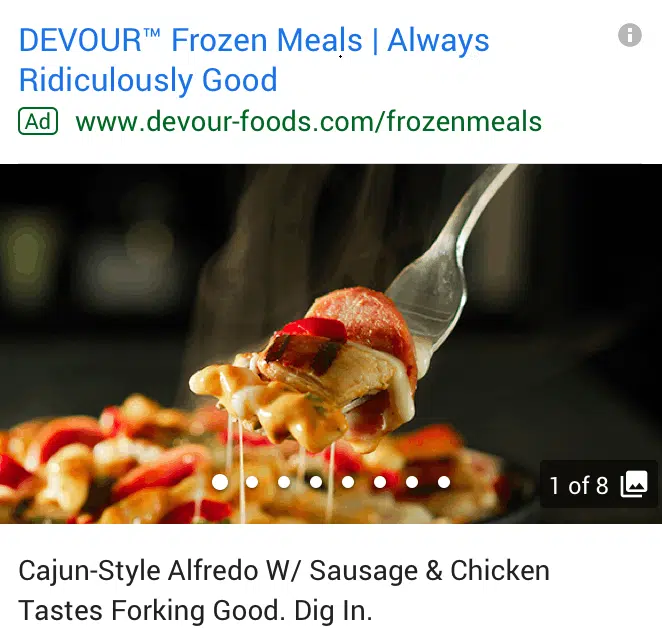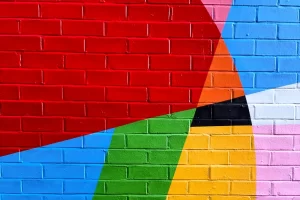In an era of ever evolving technology, it seems very “far off” to assume that Google Ads’ ever-changing ecosystem will remain intact. 2019 is far from over, but in this year’s edition of Google Marketing Live, a massive marketing-focused conference hosted by the search giants, Google announced nearly every update coming to the Google Ads platform. And guys, we have a lot of stuff to be excited about.
Here are some big changes, and all-around new products, that every PPC marketer should at least be aware of:
1. Discovery Ads
Back in 2017, Google announced the launch of the Google Discovery app for iOS and Android devices, which came out later in 2018. This app allows users to stay updated with what interests them the most. The app will create a feed with highly personalized updates for people about the music they love, sports highlights, engaging videos, relevant news stories, and all-around interesting articles.
Google creates this feed for each individual by using information from their own database of search interactions, and interactions with sites within the Google Network. All of this along with data about what’s trending in the user’s area and the world.
The Google Discovery app was initially ad-free, but not for long, as Google announced the launch of the long-awaited Discovery Ad format, currently in private beta testing. Advertisers around the globe forecast the arrival of Discovery ads to the digital marketing ecosystem to be an amazing opportunity. This is Google’s way to reach new customers utilizing feed-based ad formats that were previously dominated and proven effective by Facebook. This new feature is considered to have that much potential that it will have its own dedicated Campaign Type in the Google Ads platform.
The main placement in which these new ads are going to appear in the Google Discovery app, but they also will be able to show up in users’ Youtube feeds as well as in their promotional and social tabs in Gmail. Since these ads will show up in users’ personalized feeds, search intent is automatically taken out of the equation when it comes to targeting. Instead, targeting options will resemble the way that we target Display Network campaigns, with In-Market audiences, Interest Audiences, and the newer Custom Intent audiences.
The formatting for these new Discovery Ads will be the following:
- Up to 5 large, high-quality images. Google has made it clear that it will not accept any blurry images, ones that are cropped poorly, have skewed image orientation, or contain any text that resembles clickbait or that looks like a clickable call-to-action. The ads could be either “Single-Image” or “Carousel,” just like on Facebook.
- Up to 5 headlines of 40 characters each.
- Up to 5 descriptions of 90 characters each.
- A call-to-action button.
Google will utilize its powerful AI to mix and match these sets of 5 images, headlines and descriptions to find the highest performing combinations, following the convenient model of Responsive Display ads.
Why be excited you ask?
Hasn’t Facebook been doing these for years?
Well, yes, but a key difference within the two is the mindset of the user while browsing within the two platforms.
People browsing on Facebook care more about what their friends are doing and sharing than what an advertiser is trying to sell to them.
On the other hand, while in Google Discover, users are looking to consume information in general. We could assume that this frame of mind would make it easier for a user to want to engage with your ad.
2. Gallery Ads
Search Network ads have always been intended to be text-based only (except for a brief experiment they conducted in 2016 for the auto industry).
During this year’s Google Marketing Live seminar Google announced the arrival of the new Gallery ad format, which will finally bring images to search ads.
The only limitation is that this format is exclusive for mobile devices and will only appear in the first ad position. While can be a limitation to many it can also create better opportunities for PPC professionals that understand how to optimize their ads to maximize their ad rank.
At first glance, this is what they will look like:

When someone clicks on the ad, it becomes a “full-screen experience” that breaks down each image and tagline into scrollable form, resembling the “instant experience” feature Facebook rolled out earlier this year.
This new ad format will be primarily billed per click (CPC), but they will also be billed each time that a user swipes through 3 images.
The arrival of the new Gallery ad format is very appealing. This new format will couple the opportunity that the Search Network provides to capitalize on user intent with the power of visual storytelling that advertisers could previously only take advantage of with Display ads. In some cases, just a headline and a description of a company’s products and/or services are not enough to completely showcase their offer. An image could be the little nudge a company needs to dramatically increase user interaction with its ads. Besides, gallery ads will be able to immediately grab a user’s attention and will occupy some serious real estate in the Search Engine Results Page, providing the advertisers that make it to the first ad position on mobile devices with a huge leg up to smoke their competition.
3. Bumper Machine
Creating video content for Youtube campaigns can be an exhausting endeavor. Youtube video ads come in three main formats of different lengths, Trueview (up to 3 minutes, skippable after 5 seconds), Pre-Roll (between 15 and 20 seconds depending on where the viewer is based, non-skippable), and Bumper (6 seconds, non-skippable). While testing is the road to advertising success, to make a video every time you want to try a new twist on your content can quickly become very expensive and time-consuming. Thankfully, Google has found a way to make this easier for us.
Now, with the Bumper Machine tool, Google can take videos from our longer-form formats (up to 90 seconds of video) and create bumper ads for us while leaving the original messaging intact.
*It is important to note that this is not necessarily an alternative for hiring a video content creator, but rather an aid for the aforementioned video professional to save a great deal of time and pull ideas from.
So how does it work? All you have to do is upload an old longer-format video ad to the Bumper Machine, wait a few minutes, and Google will get back to you with 3-4 “attempts” to condense the most relevant points from your original content in bumper ad-fashion. Once you get Google’s attempt at getting your messaging right, you can either choose one of those videos as the final version or get one as a starting point and do some light editing on it to make it right.
Since their release, 6-second “Bumper” ads have proven to be very successful, so this is a very exciting new feature. The common person’s attention span is consistently becoming shorter and shorter. It is to be expected that longer video ad formats like Trueview will likely be skipped by users within 5 seconds anyways.
To craft an ad that can contain all of your intended messaging in 6 seconds can move mountains today. Of course, all content creators know that condensing a value proposition or advertising message in short-form can become very tricky. It doesn’t have to be anymore
4. Multiple Changes Coming to Google Shopping
The New Google Shopping Experience
During this year’s edition of Google Marketing Live, it was announced that Google Shopping will be merged with longer-lived and lesser-known Google Express, Google’s consolidated online marketplace that rivals platforms such as Amazon Prime and eBay, to create a new, highly personalized shopping experience.
What does this mean? This is the era of highly personalized content, and Google is not taking this lightly. Now users will be provided with a highly customized shopping feed that will make it more straightforward for them to find products that they would be likely to purchase.
This feed will be based on Google’s information about the user’s search patterns and overall online activity, similar to Google Discovery but focused on shopping. Not only that but consumers will now be able to buy right from their Google Shopping page instead of having to be bouncing around between websites, becoming a middleman between customers and online retailers.
Expanded Placements for Showcase Shopping Ads
Showcase Ads are a format for Shopping ads in which the advertiser can group multiple product listings into an ad for a product category, expanding merchants’ reach with broader keywords.
For example, if someone searches for “headphones” without specifying a certain model or type, Showcase Ads enable the advertiser to direct the user to a listing that contains a consolidated selection of headphone models, rather than a particular model. You would typically see these ads in search results, however, they now have the ability to appear in your Google and Youtube feeds.
Brand Manufacturers Can Now Collaborate with Their Local Retail Partners’ Budget for Shopping Ads
Let’s imagine that we are a large apparel brand, we just launched our brand-new summer collection, but notice that we are not selling many clothes in Indiana.
With this new update, we would now be able to reach out to local retail partners that sell our brand in Indiana and join forces in putting together an advertising budget to push our product’s sales with their Product Listing Ads, allowing retailers to help brands increase awareness about their product, and brands can help retailers drive sales in their area.
Win-win.
5. Deep Linking
Mobile app usage has been consistently rising ever since the arrival of smartphones. The existence of third-party apps is no secret to anyone who owns a smartphone, in fact, statistics say that 90% of smartphone users utilize apps in their day-to-day.
Well-crafted phone apps make our lives easier and, with them, you can get personalized feeds for content consumption and product recommendations, store your customer information for seamless checkout experiences, and many, many more things.
With increased app usage, maximizing user experience for mobile users can get a little complicated for some businesses when it comes to making sales.
Imagine that you own a pizza joint that has an app lets users order online and gives them the possibility of saving their checkout information for future purchases. You want to run an ad to increase online ordering, do you want mobile users to go to your app or your mobile site? The point is to always make user-experience as smooth as possible. Wouldn’t it be great if you could send mobile users from the SERP straight to the online-orders section of your app?
This way customers can check out seamlessly without having to fill out their information repeatedly. This is precisely what Deep Linking will allow us to do.
6. New Smart Bidding Updates
Machine learning and automation have been the talk of the town when it comes to PPC for the last year, and Google hasn’t been taking it lightly. Smart bidding was introduced to the Google Ads platform to help advertisers save time from the tedious task of manually optimizing their budget across every single campaign that they manage, and make room to ponder about more important things, like strategy and expanding their reach.
It’s very simple, Google takes historical click and conversion data and utilizes Artificial Intelligence to tweak your bids when it anticipates a user to engage with your ad in a certain way – whether that be clicking or converting.
This strategy has worked great for many accounts, but for some, deciphering conversion data can become a complicated task for a machine to get right, and this can lead to account owners’ wallets to brutally bleed out. Google announced the introduction to some new features in smart bidding that will allow for some human guidance in the way the computers look at the data as well as a brand-new type of smart bidding strategy. These are:
The Seasonality Adjustment Tool
Most businesses have a season year in which they perform significantly better than the rest of the year. Given Google’s algorithm bases it’s smart bidding judgments off of historical conversion data, seasonal spikes in conversions can skew Google’s understanding of your sales cycle and end up wasting you a lot of money.
This tool permits us to tell Google to not acknowledge the conversions from a certain period to modify our bids. All you need to do is select a date range, the scope of the adjustment, and the estimated impact this change will bring to your conversion rate
Data Exclusions
Taking from the same concept as Seasonality Adjustments, data exclusions let you exclude particular historical data of your choosing from being utilized by the algorithm to make bidding decisions.
Campaign-Level Conversions
When you are bidding manually, it doesn’t matter that all campaigns record every type of conversion that could happen on your site. In fact, it is very beneficial to better understand how your target audiences engage with your brand. When smart bidding enters into the picture, it’s a completely different story.
It is common practice to run a variety of campaigns with different goals within the same account. These goals could be anything from increasing users’ engagement with your content to drive sales. Up until now, we have only been able to set conversions at account-level. This leads to conversions that are not completely relevant to one campaign to still be reported.
Given that Google’s smart bidding algorithm bases its decisions on historical conversion data, this can be problematic.
Starting this year, you will now be able to set up conversions at campaign-level and ensure that Google bases its smart bidding decisions only on conversions that are relevant to your objectives for each particular campaign.
Maximize Conversion Value
The current smart bidding features we have available to us allow us to tell Google to optimize our budget towards a goal of maximizing the number of conversions we can get within what we’re willing to spend. A campaign might have multiple conversions that are of different values, and sometimes the ones that matter to us are not necessarily the ones that rake in the most immediate revenue.
With the new Maximize Conversion Value bidding strategy, we will be able to tell Google what actions on our website matter the most for our campaigns, and Google will optimize your budget to get the most valuable conversions while staying under your spending limit.
We have seen lots and lots of changes in Google Ads since the last year, and Google is not showing any signs of slowing down. It seems to be pretty clear that they want to make the experience of running ads in their platform easier than ever before.
Spreading the word about your business has never been so simple.
I don’t know about you, but I think this is freaking sweet.




